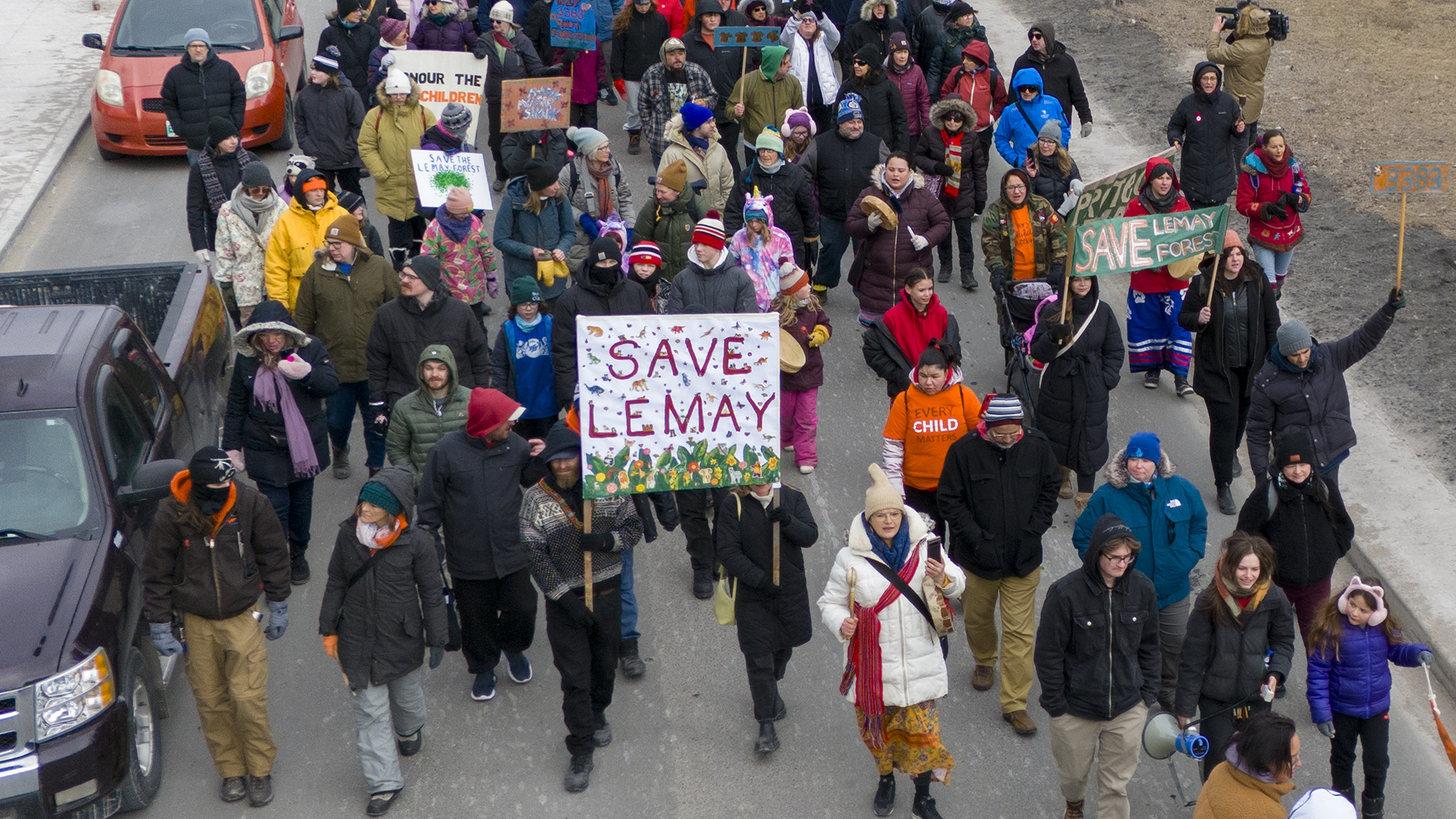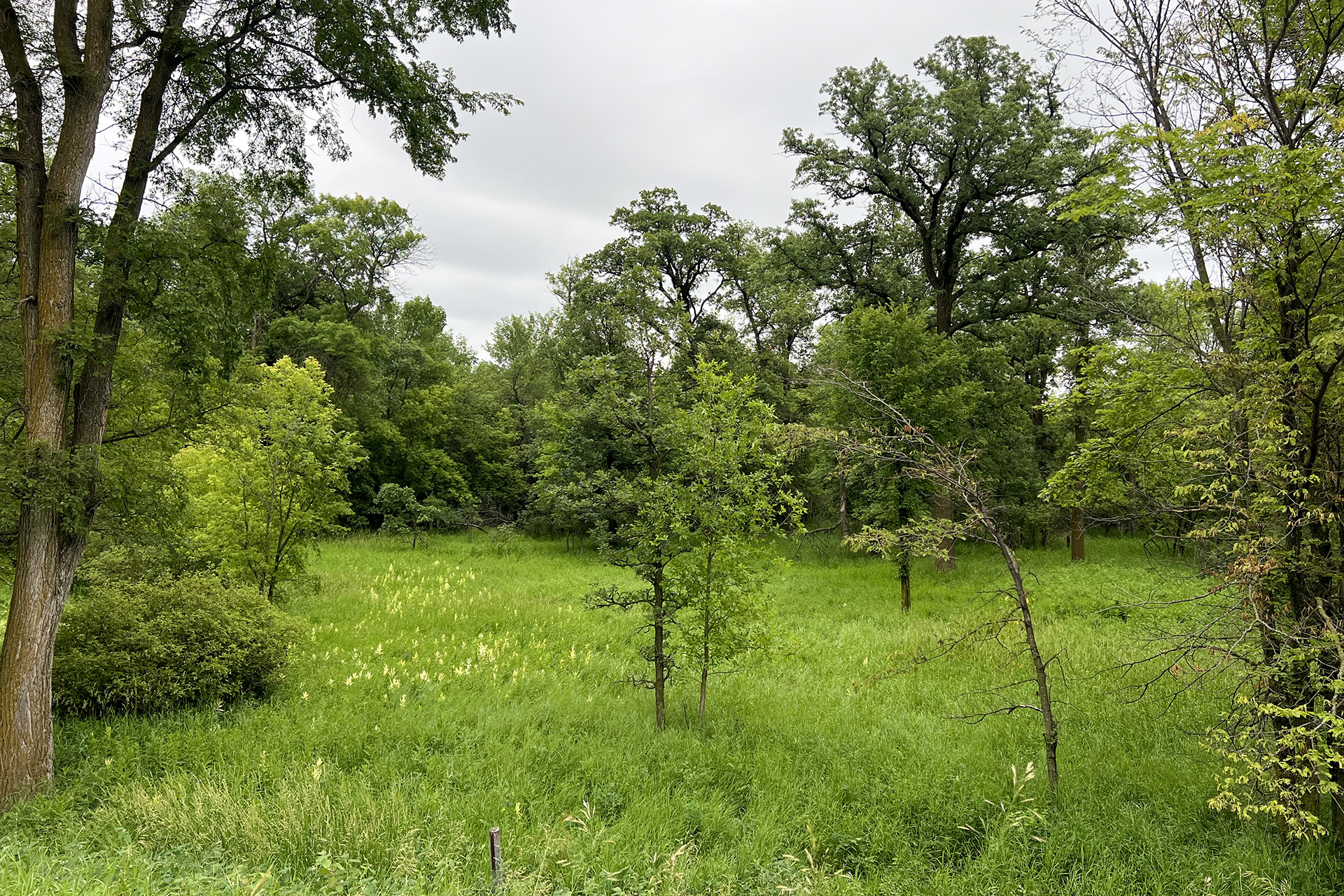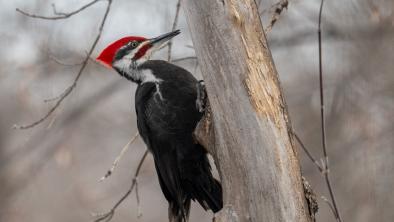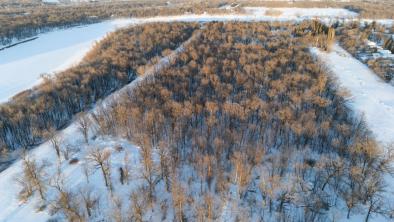Hard Lessons From the Lemay Forest

The truth about the Lemay Forest is finally coming to light, and learning about it is hard. The reality of what these 22 acres encompass will be the reason why it’s fully protected and memorialized for folks across Canada. Winnipeg is poised to add a formative city-building space, and it happens to be encompassed by hallowed old trees where we will learn for generations.
The Lemay Forest is not just grand old trees more than two centuries old, and it’s not just a historical site that harkens back to Métis leader Louis Riel defending Manitoba as a place for us to live and grow. It’s Indigenous sacred land with ceremonial lodges operating for decades, and should be recognized and revered as such. While these are reasons to preserve the forest, the historical records of L’Asile Ritchot — an orphanage and home for pregnant women — are telling the hard tale that we must reconcile.
Early research by the Manitoba Historical Society and others has brought to light the connection between L’Asile Ritchot and the residential school system that perpetuated genocide on First Nations, Metis and Inuit communities across Canada. The research has also shown that more than 3,000 people died and were buried in this forest, likely making this the largest mass grave site in the country. The final report on this is expected to be publicized soon.
The data about the Lemay Forest simply wasn’t available to the Manitoba government or the City of Winnipeg while development or even the sale of these lands was authorized over the last few years. Owner Mazyar Yahyapour and developer John Wintrup seemingly knew much of this, but instead of working to preserve the forest chose a hostile path to take down the trees and inflame a traumatic history. Today we need the provincial and municipal government to act on what we now know is a crucially important forest to preserve.
Three specific government designation and permit processes have failed the public so far. The City of Winnipeg issued a permit to remove vegetation in this forest, even though no development has been authorized and it is against provincial law to remove vegetation from a cemetery. The city of Winnipeg erred in the zoning of the Lemay Forest, as it is not designated as a cemetery despite the cemetery being marked and delineated in many documents. Finally, the provincial government erred in their research on the heritage resources of this forest, and allowed development proposals on a site that should be preserved because of the extensive human remains.

The three failings listed above have to be rectified by our governments. In December when the owner began chainsawing trees in this historical hotbed, the public and the government didn’t fully understand what was at risk. Now we have some progress. As of March 27, the City of Winnipeg is discussing expropriating the land while the province of Manitoba is reviewing the heritage resources board work needed to formally designate this forest under the Heritage Resources Act.
Over the next few months the Wilderness Committee and the many organizations and individuals standing up for this forest will be hosting teach-ins. We want to bring out information on the way we cared for orphans, how we treat pregnant women, reconciliation of residential school atrocities, preservation of Indigenous sacred sites, the way we honour Metis history, and my own specific areas of expertise: big old trees and pileated woodpeckers.
The forest is still standing and the ceremonial fire is still burning, but we can’t slow the pressure on our elected officials. Use our letter-writing tool to send a letter, or another letter, to governments, demanding the Lemay Forest become a memorial heritage site.


